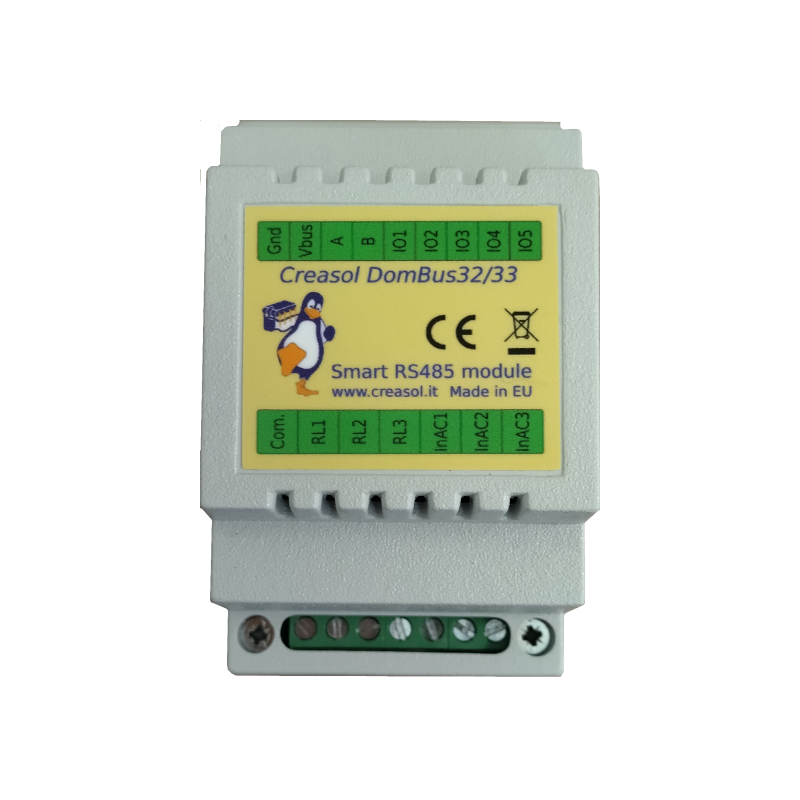
- -25%
Email: store@creasol.it - Telegram: CreasolTech - Whatsapp: +393283730010
Prioritert post: raskt og billig - Express Courier: raskt
Kontakt oss før du returnerer produkter!

DIN-skinnemodul designet for å domotisere 3 eksisterende lys ved hjelp av 230V trykknapp og trinn-for-trinn-relé.
Reléet brukes til å veksle mellom det eksterne trinnvise reléet (sender en puls til 230V-spolen) og AC-inngang brukes til å overvåke lysstatusen (PÅ/AV).
De 5 analoge/digitale I/O-ene kan kobles til lavspent-trykknapper, tellere, temperaturavstand og alarmsensorer.
 Full support: most products are designed by us!
Full support: most products are designed by us!
Email: store@creasol.it - Telegram: CreasolTech - Whatsapp: +393283730010
 Bestillinger sendes innen 1 virkedag
Bestillinger sendes innen 1 virkedag
Prioritert post: raskt og billig - Express Courier: raskt
 24 måneders garanti, enkel retur/refusjon
24 måneders garanti, enkel retur/refusjon
Kontakt oss før du returnerer produkter!
DomBus33 er enDIN-SKINNE-modul, 54 mm bred,med3 reléutganger,3 AC-inngangerog5 lavspente I/O-ertilgjengelig med to forskjellige fastvare:
DomBus33 har samme maskinvare somDomBus32men med firmware spesielt utviklet for å kontrollere/overvåke lys: på sin måte kan lys aktiveres av eksisterende 230V trykknapper (som sender pulser til trinn-reléspolen), og også av domotic-kontrolleren (scener, grupper, slå av alt lys når du går ut av bygningen, kontrollere lys med smarttelefonen, aktivere lys tilfeldig når AWAY-modus er i, ...)./p>

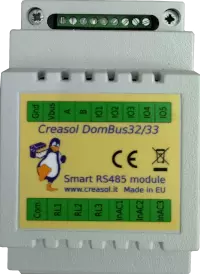
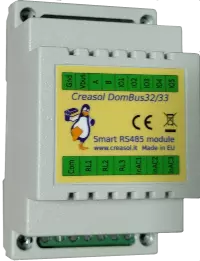
For å forenkle kabling har rekkeklemmen 3 terminaler for reléer, 3 for AC-innganger og 1 felles terminal (som skal kobles til nøytral eller linje): på denne måten er det enklere og raskere å koble til the modul til elektriske laster som deler samme effektbryter (f.eks. lyssystem, varmesystemventiler, ...). Vennligst ta vare påkoble kun til laster som er beskyttet av samme RCCB (kretsbryter). Selvfølgelig er det mulig å bruke releer for å bytte lavspenningsbelastning eller velge arbeidsmodus for en maskin (for eksempel varmepumpe), koble den felles ledningen til GND- eller DC-forsyningsspenning: i dette tilfellet er de 3 AC-inngangene ubrukelige.
Som andre DomBus-moduler,alle porter kan konfigureres på mange forskjellige måter, og også denne modulenstøtter DCMD, kommandoer sendt til samme eller andre DomBus-modulerå utføre enkle handlinger som gjør det mulig å oppnå høy pålitelighet (DCMD-kommandoer fungerer selv om domotic-kontrolleren ikke er operativ) og enkel programmering (trenger ikke lage automatiseringer i hjemmeautomatiseringskontrolleren: bare konfigurer DomBus-porter for å utføre handlinger på hendelser). Sist, men ikke minst, som andre DomBus-moduler, er DomBus33optimalisert for å få lavt strømforbruk, mindre enn 10mW normalt (0,75mA @13,6V) og mindre enn 150mW når alle 3 reléer er PÅ (10mA @13,6V).
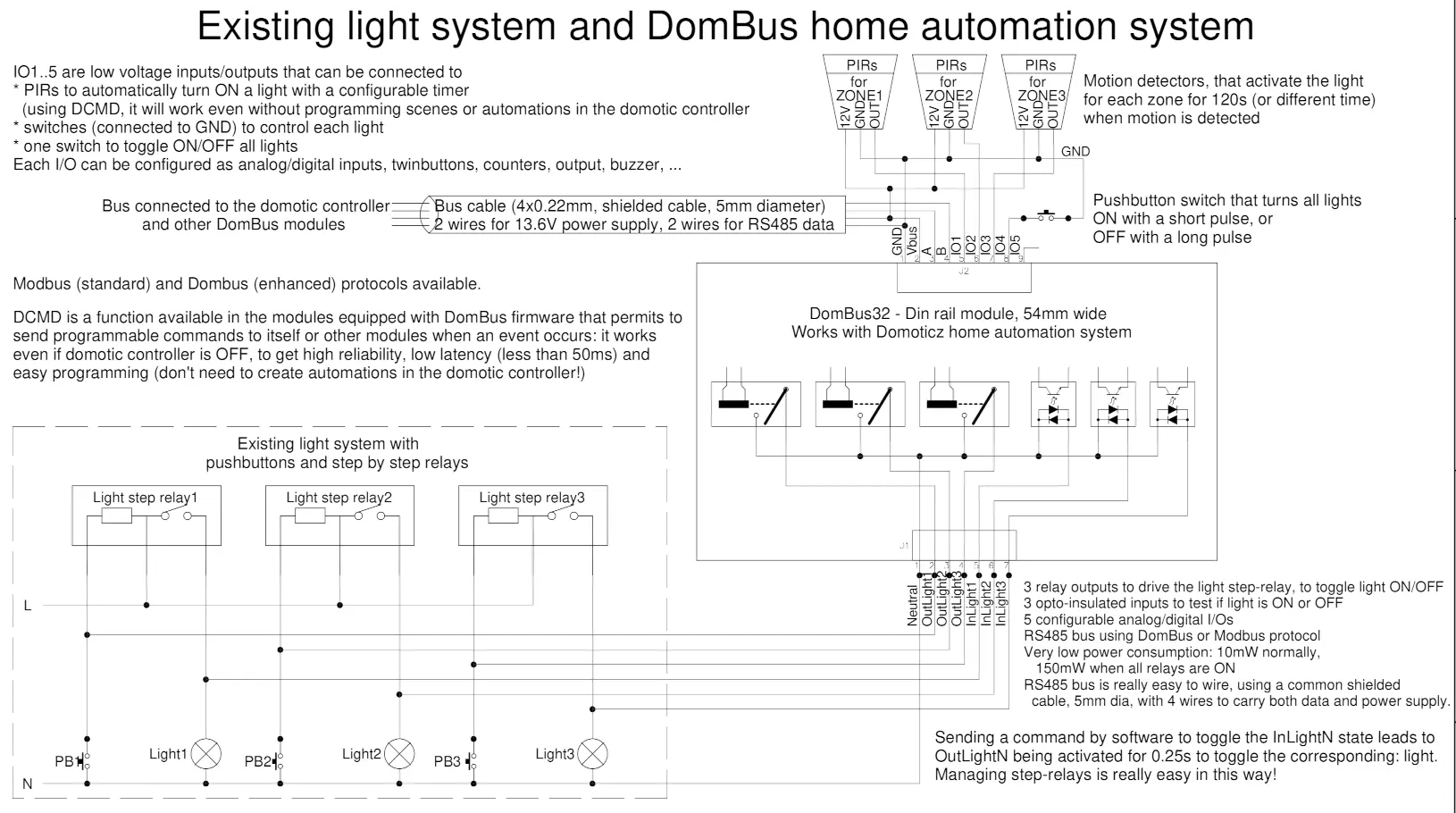
The following video shows a presentation of some domotic modules designed and produced in Italy by Creasol to make a reliable, easy and power-optimized home automation system.
The next video shows our Smart EVSE module that can be used to charge the electric car by using only solar power, or adding 25/50/75/100% of available power from the electrical grid.
Our industrial and home automation modules are designed to be
Modules are available in two version:
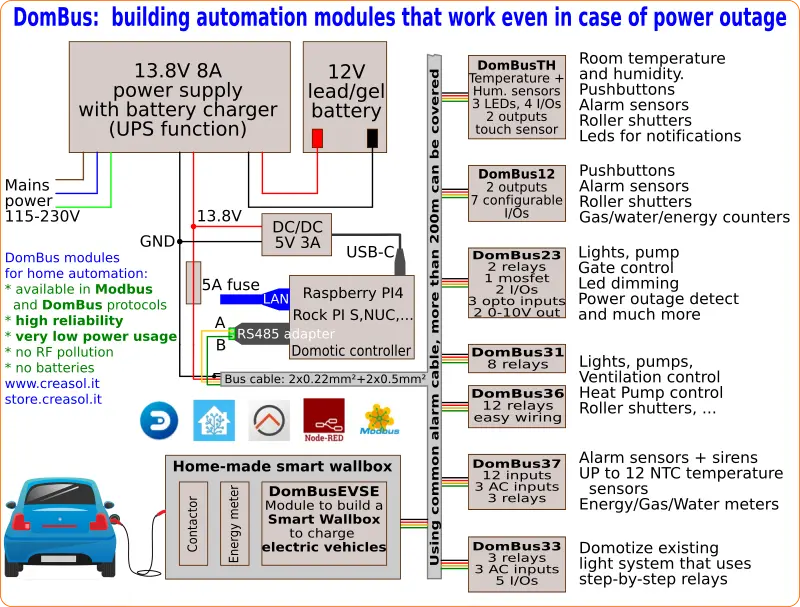
Store website - Information website
For our products we can offer FULL SUPPORT and CUSTOMIZATION: please contact us by Email or Telegram
 Complete solution to make a Smart EVSE, charging the electric vehicle using only energy from renewable source (photovoltaic, wind, ...), or adding 25-50-75-100% of available power from the grid.
Complete solution to make a Smart EVSE, charging the electric vehicle using only energy from renewable source (photovoltaic, wind, ...), or adding 25-50-75-100% of available power from the grid.
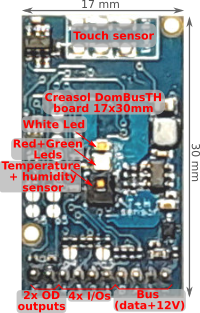 Compact board, 32x17mm, to be installed on blank cover with a 4mm hole in the middle, to exchange air for the relative humidity sensor. It can be installed in every room to monitor temperature and humidity, check alarm sensors, control blind motor UP/DOWN, send notifications (using red and green leds) and activate white led in case of power outage.
Compact board, 32x17mm, to be installed on blank cover with a 4mm hole in the middle, to exchange air for the relative humidity sensor. It can be installed in every room to monitor temperature and humidity, check alarm sensors, control blind motor UP/DOWN, send notifications (using red and green leds) and activate white led in case of power outage.
Includes:
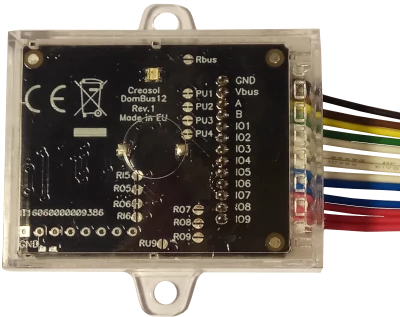 Very compact, versatile and cost-effective module with 9 ports. Each port can be configured by software as:
Very compact, versatile and cost-effective module with 9 ports. Each port can be configured by software as:
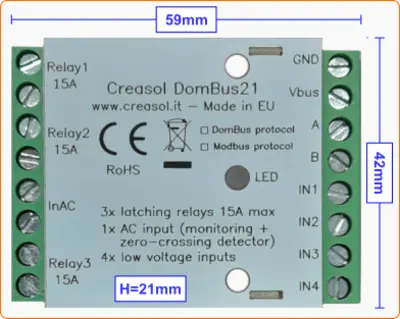 Very low power consumption module designed to enable up to 3 high power loads, up to 15A (3kW).
Very low power consumption module designed to enable up to 3 high power loads, up to 15A (3kW).
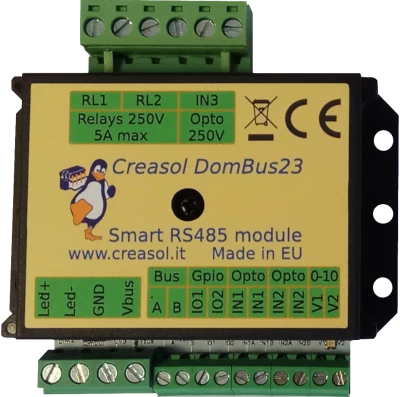 Versatile module designed to control gate or garage door.
Versatile module designed to control gate or garage door.
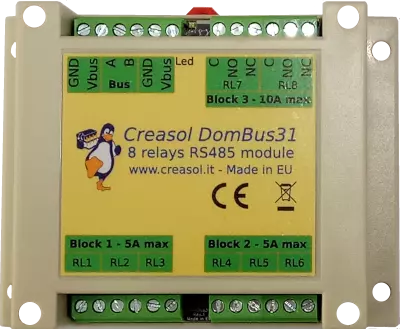 DIN rail low profile module, with 8 relays and very low power consumption:
DIN rail low profile module, with 8 relays and very low power consumption:
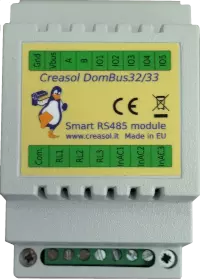 Versatile module with 230V inputs and outputs, and 5 low voltage I/Os.
Versatile module with 230V inputs and outputs, and 5 low voltage I/Os.
 Module designed to control 3 lights already existing and actually controlled by 230V pushbuttons and step-by-step relays. In this way each light can be activated by existing pushbuttons, and by the domotic controller.
Module designed to control 3 lights already existing and actually controlled by 230V pushbuttons and step-by-step relays. In this way each light can be activated by existing pushbuttons, and by the domotic controller.
Each relay can toggle the existing step-relay, switching the light On/Off. The optoisolator monitors the light status. The 5 I/Os can be connected to pushbuttons to activate or deactivate one or all lights.
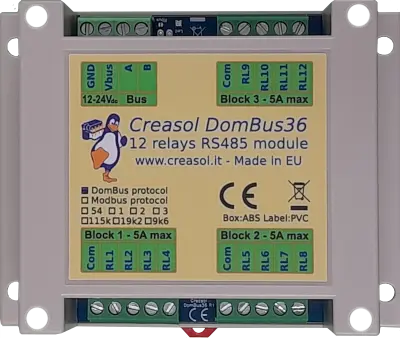 DIN rail module, low profile, with 12 relays outputs and very low power consumption.
DIN rail module, low profile, with 12 relays outputs and very low power consumption.
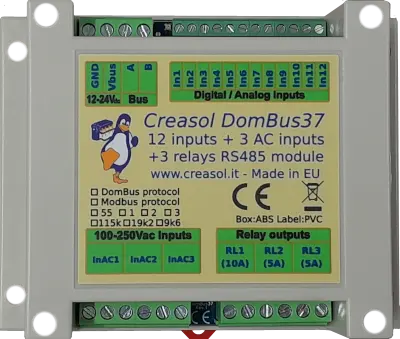 Module designed to be connected to alarm sensors (magnetc contact sensors, PIRs, tampers): it's able to monitor mains power supply (power outage / blackout) and also have 3 relays outputs.
Module designed to be connected to alarm sensors (magnetc contact sensors, PIRs, tampers): it's able to monitor mains power supply (power outage / blackout) and also have 3 relays outputs.
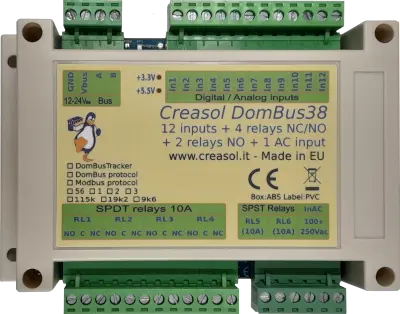 DIN rail module designed for burglar alarm system.
DIN rail module designed for burglar alarm system.
![]() DIN rail module that control azimuth + elevation/tilt motors of a sun tracker, to maximize photovoltaic energy production during the day and seasons.
DIN rail module that control azimuth + elevation/tilt motors of a sun tracker, to maximize photovoltaic energy production during the day and seasons.
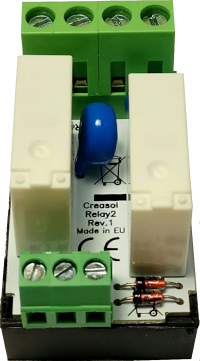 Simple module with 2 relays, to be used with DomBus modules or other electronic boards with open-collector or open-drain outputs
Simple module with 2 relays, to be used with DomBus modules or other electronic boards with open-collector or open-drain outputs
 IoT board designed for NodeMCU v3 board using ESP8266 WiFi microcontroller
IoT board designed for NodeMCU v3 board using ESP8266 WiFi microcontroller